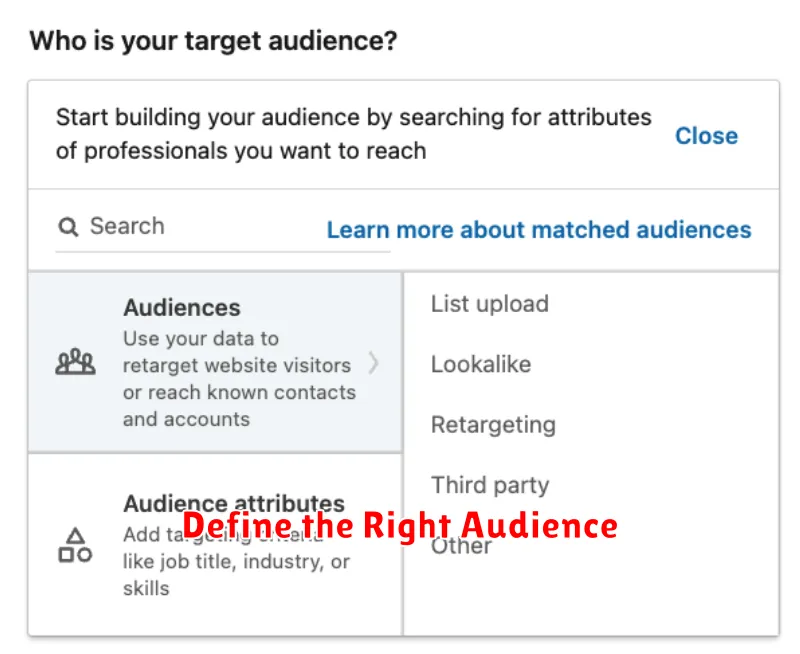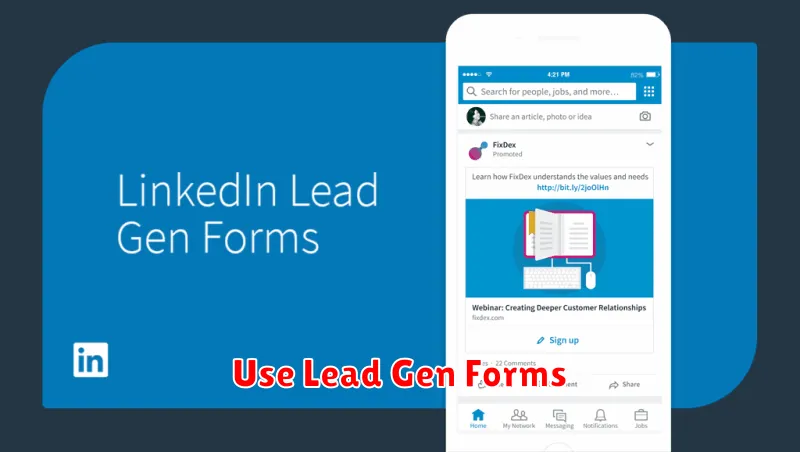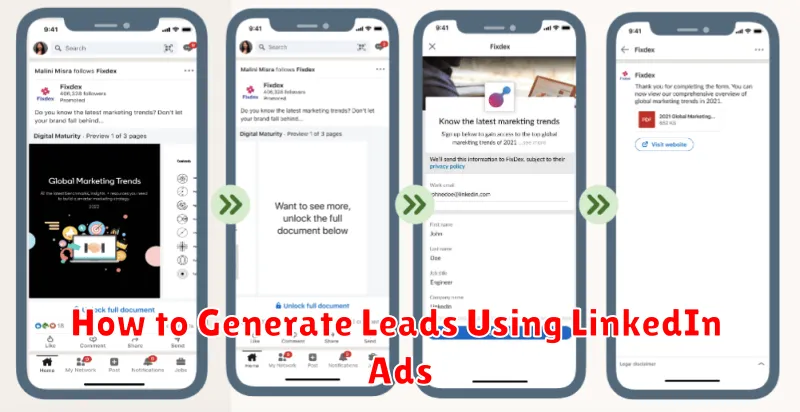Are you looking to generate leads and grow your business? LinkedIn Ads offer a powerful platform to connect with professionals and decision-makers, making it an ideal channel for B2B lead generation. This article will provide a comprehensive guide on how to leverage the power of LinkedIn Ads to effectively generate high-quality leads for your business. We will cover essential strategies, from targeting the right audience and crafting compelling ad copy to optimizing your campaigns for maximum ROI. Learn how to harness the potential of LinkedIn Ads and unlock significant growth opportunities.
Lead generation is crucial for sustainable business growth. LinkedIn, with its vast network of professionals, presents a unique opportunity to target specific industries, job titles, and demographics, enabling highly effective lead generation campaigns. By understanding the nuances of LinkedIn Ads, you can create targeted campaigns that reach the right people with the right message, driving valuable leads and ultimately boosting your bottom line. Discover the proven tactics and best practices to maximize your LinkedIn Ads performance and achieve exceptional results in your lead generation efforts.
Why Choose LinkedIn for B2B
LinkedIn stands out as a premier platform for B2B marketing and lead generation. Unlike other social networks, LinkedIn boasts a predominantly professional user base, providing direct access to a concentrated audience of decision-makers, industry leaders, and potential clients.
Precise targeting is a key advantage. LinkedIn’s robust advertising platform allows you to target specific demographics, job titles, industries, company sizes, and even individual companies. This granular control ensures your message reaches the most relevant prospects, maximizing your campaign’s effectiveness and return on investment.
Furthermore, LinkedIn fosters a professional environment that encourages meaningful engagement and relationship building. Content shared on the platform is typically business-focused, creating a receptive space for valuable thought leadership and industry insights. This context makes LinkedIn an ideal platform for nurturing leads and establishing credibility.
Set Up Your Campaign Objectives
Before launching your LinkedIn Ads campaign, defining clear objectives is crucial. This ensures your efforts are focused and measurable. LinkedIn offers various campaign objectives categorized by your desired outcome.
Choosing the Right Objective
Selecting the correct objective aligns your campaign with your overall marketing goals. Consider what you want to achieve: brand awareness, website visits, engagement, lead generation, or video views. Each objective influences ad formats, bidding strategies, and the metrics LinkedIn uses to measure success.
For lead generation campaigns, choose the “Lead generation” objective. This optimizes your ads for collecting leads directly through LinkedIn lead generation forms, pre-filled for user convenience. This streamlines the process, improving conversion rates.
Carefully consider your overarching goals before selecting a campaign objective. A well-defined objective is the foundation of a successful LinkedIn Ads campaign.
Define the Right Audience

Targeting the right audience is crucial for LinkedIn ad campaign success. A precisely defined audience ensures your message reaches the most relevant professionals, maximizing your return on investment and generating high-quality leads.
LinkedIn offers robust targeting options, allowing you to define your audience based on several criteria:
- Location: Target by country, city, or even specific postal codes.
- Job Title: Reach professionals with specific job titles, such as “Marketing Manager” or “Software Engineer”.
- Industry: Focus on industries relevant to your product or service, like “Information Technology and Services” or “Financial Services”.
- Company Size: Target businesses based on their employee count, allowing you to focus on small, medium, or large enterprises.
- Seniority: Refine your targeting by reaching specific levels of seniority, such as entry-level, manager, or director.
- Skills: Target professionals with particular skills relevant to your offerings.
- Groups: Reach members of specific LinkedIn groups related to your industry or niche.
By strategically combining these targeting options, you can create highly focused campaigns that resonate with your ideal customer profile and drive meaningful engagement.
Use Lead Gen Forms

Lead Gen Forms are a powerful tool within LinkedIn Ads specifically designed to capture leads directly within the platform. They pre-fill with the user’s profile information, making it incredibly easy for potential leads to submit their details. This streamlined process significantly reduces friction and increases conversion rates.
When creating Lead Gen Forms, ensure the form fields are relevant to the information you need. Keep the form concise to avoid overwhelming potential leads. A clear and compelling call to action is also crucial. Explain what value the lead will receive by submitting the form.
After a lead submits their information, you can access it directly through your LinkedIn Campaign Manager. You can also set up integrations to automatically send lead data to your Customer Relationship Management (CRM) system, streamlining your lead nurturing process. Regularly monitor the performance of your Lead Gen Forms and make adjustments as necessary to optimize conversion rates.
Design Compelling Ad Creatives
Your ad creative is the first impression, so make it count. Visual appeal is crucial. Use high-quality images or videos that are relevant to your target audience and campaign objective. Ensure your visuals are professionally designed and align with your brand guidelines.
Clarity and conciseness are key in your ad copy. Clearly communicate your value proposition and highlight the benefits of your offer. Use strong calls to action that encourage immediate engagement, such as “Download Now,” “Learn More,” or “Register Today.”
Testing different creatives is essential for optimization. Experiment with various images, videos, and copy to see what resonates best with your audience. LinkedIn offers A/B testing features to streamline this process and identify top-performing variations.
Consider using rich media formats like carousel ads or video ads to capture attention and convey more information. These formats can increase engagement and drive higher click-through rates.
Monitor Click-Through and Conversion Rates
Monitoring your LinkedIn ad campaign’s performance is crucial for optimizing lead generation. Keep a close eye on key metrics such as click-through rates (CTR) and conversion rates.
Click-through rate (CTR) measures how often people click on your ad after seeing it. A low CTR may indicate that your ad creative isn’t compelling enough or that you’re targeting the wrong audience. Experiment with different ad copy and visuals to improve your CTR.
Conversion rate measures how often clicks on your ad turn into desired actions, such as form submissions or content downloads. A low conversion rate could suggest issues with your landing page experience or offer. Ensure your landing page aligns with your ad’s message and that your offer is relevant to your target audience.
Regularly analyze these metrics within the LinkedIn Campaign Manager. By understanding these key performance indicators (KPIs), you can identify areas for improvement and refine your campaigns for better lead generation results.
Refine Based on Performance Data
After your LinkedIn Ads campaign has run for a period, accumulating performance data is crucial for optimization. This data provides insights into what’s working and what’s not, allowing you to refine your targeting, ad creatives, and bidding strategies.
Key metrics to monitor include:
- Click-Through Rate (CTR): A low CTR may indicate that your ad creative isn’t resonating with your target audience. Experiment with different headlines, body copy, and visuals.
- Conversion Rate: This metric reveals how effectively your landing page converts clicks into leads. A low conversion rate suggests potential issues with your landing page design, offer, or call to action.
- Cost Per Click (CPC): Monitor CPC to ensure you’re getting a reasonable return on your ad spend. A high CPC might warrant adjustments to your targeting or bidding strategy.
- Cost Per Lead (CPL): This is arguably the most important metric for lead generation campaigns. Strive to lower your CPL by optimizing all aspects of your campaign, from targeting to landing page experience.
Regularly analyzing this data and making data-driven adjustments is essential for improving campaign performance and maximizing your return on investment.

